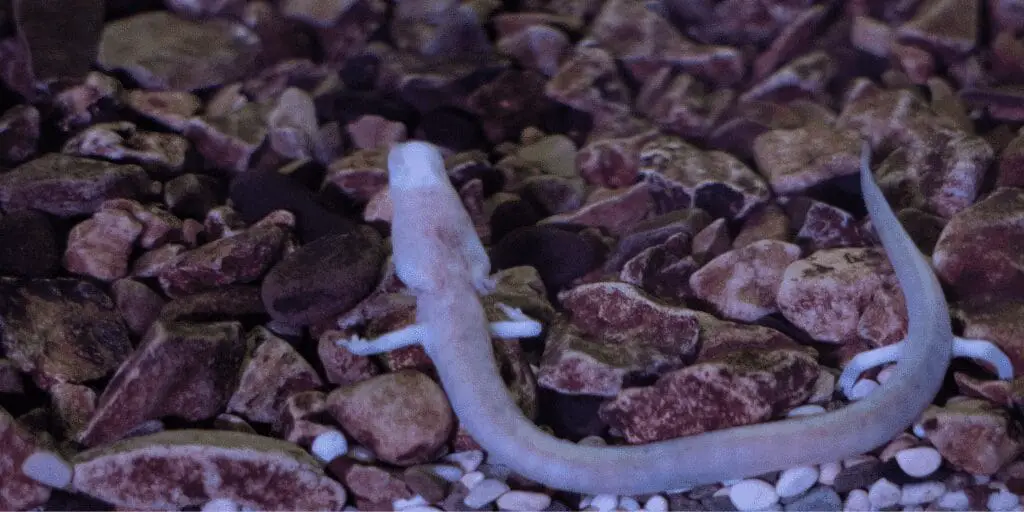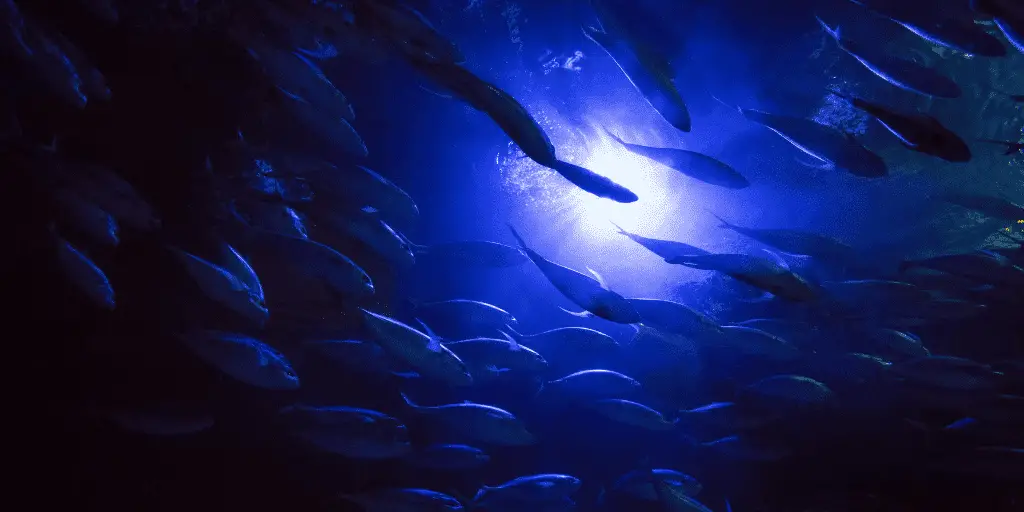Dive into the enigmatic world of animals with small eyes, a topic that illuminates the remarkable adaptations of creatures thriving in darkness. Discover how moles, blind snakes, and other species have evolved to master their environments without relying on sight.
This article sheds light on the evolutionary trade-offs that have led to tiny eyes and enhanced alternative senses, offering unique insights into the lives of these extraordinary animals.
Key Takeaways:
- Moles have evolved tiny, rudimentary eyes that allow them to differentiate between light and dark, compensating for their limited vision with highly developed senses of touch and hearing, which are essential for navigating their subterranean habitats and detecting prey.
- Blind snakes and cavefish exhibit extreme evolutionary adaptations to life in darkness, with vestigial eyes that are functionally redundant, instead relying on enhanced touch and smell to hunt and navigate in their respective underground and aquatic environments.
- Blind salamanders and earthworms demonstrate varying degrees of visual reduction, with the former possessing vestigial eyes and relying on chemical and pressure detection, while the latter have simple eyespots to discern light intensity, aiding in predator avoidance and circadian rhythm regulation.
- Tarsiers, despite their small eyes relative to other animals, possess remarkable nocturnal vision adaptations, including a high rod-to-cone ratio and a reflective layer behind the retina, while naked mole rats have tiny eyes suited to their dark, subterranean lifestyle, relying on touch and social cooperation for survival.
- Deep-sea fish have small, specialized eyes with adaptations such as high rod cell density and reflective layers to maximize light detection in their dark, high-pressure environments, often complemented by other sensory mechanisms like bioluminescence and enhanced tactile structures to locate prey and mates.
List of Fascinating Animals With Small Eyes
Moles, blind snakes, cavefish, blind salamanders, earthworms, tarsiers, naked mole rats, and deep-sea fish have small eyes adapted to dark environments.
| Animal Group | Sensory Adaptations and Survival Mechanisms |
| Moles | Tiny, protected eyes for limited light differentiation; rely on touch, hearing, and smell for navigation and foraging. |
| Blind Snakes | Vestigial eyes, specialized in touch and smell for underground life; over 400 species adapted to diverse subterranean habitats. |
| Cavefish | Underdeveloped eyes, use lateral line system as natural sonar and enhanced taste buds for navigation and feeding in dark caves. |
| Blind Salamanders | Reduced or absent eyes, heightened senses of touch and chemical reception for navigating dark, subterranean waters. |
| Earthworms | Simple eyespots (ocelli) for light intensity detection, aiding in survival and circadian rhythms. |
| Tarsiers | Small, fixed eyes with a high ratio of rod receptors for enhanced night vision in nocturnal environments. |
| Naked Mole Rats | Tiny, protected eyes; rely on sense of touch and social structure for survival in underground colonies. |
| Deep-Sea Fish | Small, specialized eyes with high rod cell density and large lenses for light detection in dark ocean depths; use bioluminescence and heightened tactile senses for survival. |
1. Exploring the World of Moles: Masters of Underground Living

Moles are fascinating creatures, often misunderstood due to their reclusive, subterranean lifestyle. One of the most intriguing aspects of these small mammals is their eyes. At first glance, you might even think they don’t have any! But moles do have eyes, although they are incredibly tiny and, in many cases, hidden beneath fur and skin.
Anatomical Structure of Mole Eyes
The eyes of a mole are a marvel of evolutionary adaptation. Unlike the prominent, expressive eyes of many animals, a mole’s eyes are reduced in size and often lack functionality. Typically, these eyes are just 1 millimeter in diameter – that’s as small as the tip of a pencil! They are usually covered by a layer of skin or fur, which protects them from the abrasive soil that moles constantly move through.
This doesn’t mean that moles are completely blind. While their vision is limited, they can still differentiate between light and dark. This rudimentary sense of sight is enough for an animal that spends the majority of its life in darkness. The structure of their eyes is simplified, with fewer components for processing visual information, which is a clear indication that sight is not a mole’s primary sense.
Evolutionary Trade-Offs and Adaptations
The small eyes of moles are a classic example of an evolutionary trade-off. As moles adapted to a life spent burrowing through the earth, large, complex eyes became less necessary. In fact, they could be a liability, prone to damage from dirt and debris. Over countless generations, the eyes of moles have become minimized to the point where they serve little purpose for detailed vision.
However, this loss of visual acuity came with significant gains in other areas. Moles have developed an exceptional sense of touch, with highly sensitive whiskers and skin that can detect the slightest vibrations. Their ears, although not external, are finely tuned to pick up sounds through the ground. These adaptations make moles incredibly adept at navigating their dark world and locating prey such as worms and insects.
Without the reliance on vision, moles have become masters of their underground domain. They use their powerful forelimbs to excavate extensive tunnel systems, which they navigate with ease.
The star-nosed mole, for instance, has a unique star-shaped set of appendages around its nose that is covered in over 25,000 minute sensory receptors. This incredible organ is used to feel its way around and is so sensitive that it can detect the electrical fields of prey animals.
Moles are also equipped with a keen sense of smell that aids in foraging. They can sniff out worms and other invertebrates through the soil, making them efficient hunters. The combination of touch, hearing, and smell allows moles to create a mental map of their environment, ensuring they can find food, avoid predators, and navigate their way back to the safety of their burrows.
2. The Unique Vision of Blind Snakes and Cavefish
Blind Snakes: Vestigial Eyes in Subterranean Life
Imagine living your entire life in the dark, where eyesight is as useful as a flashlight with no batteries. This is the reality for blind snakes, a group of serpents that have taken the phrase “out of sight, out of mind” to a whole new level.
These creatures possess what are known as vestigial eyes—remnants of what once were fully functional organs, now reduced to mere specks beneath scales or skin. Unlike their surface-dwelling cousins, blind snakes have traded in the art of seeing for a mastery of touch and smell.
The evolutionary tale of blind snakes is one of adaptation and survival. Over countless generations, these snakes have burrowed deeper into the earth’s embrace, finding their niche in a world devoid of light. Here, eyes became less about seeing and more about an unnecessary energy expenditure. Genetic and environmental pressures nudged these reptiles towards a life where eyes are as obsolete as an appendix in humans.
Blind snakes, such as the Texas blind snake (Leptotyphlops dulcis), have become connoisseurs of the underground, using their bodies to feel the vibrations of prey and predators alike. Their sense of smell is akin to a superpower, allowing them to detect food and mates in complete darkness.
Distributed across various continents, from the arid deserts of Africa to the tropical forests of South America, these snakes have diversified into over 400 species, each uniquely adapted to their specific subterranean habitat.
Cavefish: Adaptation to Dark Environments
Now, let’s dive into the watery world of cavefish, where the concept of “seeing is believing” doesn’t hold water. The Mexican tetra (Astyanax mexicanus) is a prime example of a species that has embraced the darkness of its cave environment. Over evolutionary time, these fish have let go of their reliance on vision, resulting in small, underdeveloped eyes that often don’t function at all.
The story of cavefish is a journey through adaptation and natural selection. In the absence of light, eyesight is not just unnecessary; it’s a luxury that evolution cannot afford. The Mexican tetra, along with other cave-dwelling fish, has undergone remarkable changes. Some populations still retain their eyesight, living in the rivers outside caves, while their eyeless kin thrive in the dark, watery chambers within.
But how do these fish navigate a world shrouded in eternal darkness? They’ve honed other senses to near perfection. Their lateral lines, sensitive to the slightest of water movements, act as natural sonar systems, detecting obstacles and prey. Some species have even developed enhanced taste buds, turning their entire bodies into tongues that can taste the water around them for hints of food.
Cavefish are found in various isolated cave systems around the world, each group uniquely molded by their specific environment. From the deep limestone caves of Central America to the murky waters of Southeast Asia, these fish are living proof that life not only finds a way but also thrives in conditions that would leave many other species quite literally in the dark.
3. Vision in the Dark: Blind Salamanders and Earthworms

Blind Salamanders: Life Without Functional Eyes
Imagine navigating the world without the ability to see. This is the reality for blind salamanders, a group of amphibians that have adapted to life in complete darkness. These creatures have either significantly reduced eyes or lack them entirely.
But why is this the case? The answer lies in their unique habitats. Blind salamanders typically dwell in dark, subterranean environments where light is scarce or nonexistent. Over evolutionary time, the need for sight diminished, and so did their eyes.
The anatomy of blind salamanders is a testament to the power of adaptation. In some species, like the Texas blind salamander (Eurycea rathbuni), the eyes are vestigial, meaning they’re remnants that no longer serve a function.
These salamanders have adapted to their dark habitats by developing heightened senses of touch and chemical reception. They can detect minute changes in water pressure and currents, which helps them navigate the murky waters of their underground homes. Additionally, their ability to sense chemicals in the water allows them to locate prey and communicate with potential mates.
Living without sight, these salamanders have developed fascinating behavioral traits. For instance, they may use their elongated bodies to feel their way around or stay motionless for long periods to sense the vibrations of prey moving nearby. The absence of light in their environment has also led to a lack of pigmentation in their skin, giving them a ghostly, translucent appearance.
The ecological and evolutionary factors that have shaped these creatures are complex. In the absence of light, natural selection has favored individuals that can hunt and reproduce without relying on vision. This has led to a remarkable example of convergent evolution, where different species of blind salamanders, although not closely related, have developed similar adaptations to thrive in dark environments.
Earthworms: Simple Eyespots in Invertebrates
When it comes to earthworms, their vision is as rudimentary as it gets. Unlike the blind salamanders, earthworms possess simple eyespots known as ocelli.
These are not eyes in the traditional sense; they don’t form images but are instead capable of detecting changes in light intensity. The structure of an ocellus is basic, consisting of a few light-sensitive cells that can discern light from dark. This allows earthworms to sense when they are exposed to the surface or safely burrowed underground.
The functionality of these eyespots is crucial for an earthworm’s survival. They help the worm avoid predators by sensing the dangerous light of the outside world, prompting it to retreat into the safety of the soil. Additionally, these light-sensing organs play a role in the earthworm’s circadian rhythms, influencing when it is active or resting.
From an evolutionary standpoint, the eyespots of earthworms represent a form of vision that is sufficient for their needs. They don’t require the complex visual systems found in other animals because their lifestyle doesn’t demand it. Earthworms live in a world where touch, taste, and chemical cues are far more important than visual cues.
Different species of earthworms may have varying sensitivities to light, depending on their specific habitats. For example, those that live in areas with frequent soil disturbance may have more developed light sensitivity to quickly escape from exposure. In contrast, species that dwell in more stable environments might not rely on their eyespots as heavily.
The world of invertebrate vision is vast and varied, with earthworms sitting on the simpler end of the spectrum. Their eyespots are a clear example of how evolution shapes an organism’s senses based on the demands of its environment.
4. Nocturnal Adaptations: Tarsiers and Naked Mole Rats
Tarsiers: Small Eyes in Nocturnal Primates
Tarsiers are fascinating little creatures, and their eyes are a marvel of evolutionary adaptation. These nocturnal primates may have small eyes relative to other animals, but what they lack in size, they make up for in design.
The anatomy of a tarsier’s eye is a testament to nature’s ingenuity. Their eyes are fixed in their skull, meaning they can’t move them around like we do, but they have an incredibly flexible neck to compensate, allowing them to rotate their head almost 180 degrees.
Now, let’s talk about how these eyes work in the dark. Tarsiers have a high ratio of rod receptors to cone receptors in their retinas, which enhances their ability to see in low-light conditions.
This is crucial for spotting prey and navigating the dense forests at night. The large cornea and dilated pupil allow maximum light absorption, which is vital for their survival. Additionally, a reflective layer behind the retina, called the tapetum lucidum, acts like a mirror, reflecting light back through the retina and giving tarsiers a second chance to see it. This feature is what gives their eyes that eerie glow when caught in a beam of light.
Ecologically, tarsiers play a significant role as insectivorous predators, controlling insect populations in their habitats. Evolutionarily, their eye development has been influenced by the need to hunt and survive in the dark.
Genetic factors that contribute to eye size and night vision are areas of ongoing research, but it’s clear that tarsiers are perfectly tailored to their nocturnal lifestyle. Species like the Philippine tarsier or the Sulawesi tarsier are prime examples, thriving in the dense forests where their small, yet powerful, eyes are a key asset.
Naked Mole Rats: Tiny Eyes for Underground Rodents
Naked mole rats are a wonder of the animal kingdom, not least because of their tiny eyes. These little rodents spend the majority of their lives in the pitch-black tunnels underground, where large eyes would be more of a liability than an asset. Their eyes are small, beady, and mostly covered by a layer of skin and fur to protect them from the abrasive soil in their environment.
The structure of a naked mole rat’s eye is quite basic, and their vision is poor. They can detect light, dark, and movement, but that’s about it. However, what they lack in visual acuity, they make up for with a heightened sense of touch and a keen ability to communicate through a variety of vocalizations and vibrations.
Their large, protruding teeth are not just for digging; they also serve as sensory organs, helping them navigate their complex tunnel systems.
Evolution has made a trade-off with the naked mole rat, sacrificing good vision for eyes that won’t be damaged by dirt and grit. This is a sensible adaptation for an animal that rarely sees the light of day. Instead, they rely on their other senses and their social structure to survive.
Naked mole rats are eusocial, meaning they live in colonies with a single breeding queen and various castes, much like ants or bees. Their social interactions and the way they work together are key to their success as a species.
In their ecological role, naked mole rats are important for soil turnover and aeration, and they also serve as prey for certain predators. Their small eyes are just one part of a complex set of adaptations that allow them to thrive in an environment where many other mammals would be at a disadvantage.
5. Deep-Sea Mysteries: Vision in Ocean Depths

The deep sea is a realm shrouded in darkness, where sunlight struggles to penetrate and creatures have adapted in remarkable ways to survive.
Among these adaptations, the evolution of eye size plays a crucial role in how deep-sea fish perceive their environment. In the abyssal plains and trenches, where the concept of day and night is virtually meaningless, some fish have developed small eyes that are a testament to their unique evolutionary journey.
Anatomical Features of Deep-Sea Fish Eyes
Deep-sea fish often exhibit a fascinating array of eye adaptations that starkly contrast with their surface-dwelling counterparts. The size of their eyes can be surprisingly small, especially when considering the need to capture as much light as possible in such a dim environment.
However, these small eyes are not a hindrance but rather a specialized feature. They often possess a higher density of rod cells, the light-sensitive cells in the retina that are crucial for vision in low-light conditions. These cells can be extremely sensitive, allowing the fish to detect the faintest glimmers of light.
Moreover, the lenses of these fish are typically large in relation to their eye size, which maximizes the amount of light entering the eye. Some species also have a reflective layer behind the retina, known as the tapetum lucidum, which acts like a mirror to reflect light back through the retina, increasing the chances of light detection.
Evolutionary and Ecological Influences
The development of small eyes in deep-sea fish is a direct response to the challenges of their environment. In the deep ocean, where light is scarce or non-existent, large eyes that are adept at gathering light in brighter zones become less effective.
Instead, the evolutionary pressure has favored eyes that can function at high efficiency in near to complete darkness. This has led to the development of eyes that are small yet highly specialized for the detection of the limited light available.
The scarcity of food and the need to conserve energy have also played a role in the evolution of smaller eyes. In an environment where every bit of energy is precious, maintaining large, energy-consuming eyes may not be advantageous. Small eyes require less energy to operate, aligning with the energy-efficient adaptations seen in many deep-sea species.
Sensory Compensation in Deep-Sea Fish
To compensate for their limited vision, deep-sea fish have developed other extraordinary sensory adaptations. Many species rely on bioluminescence, producing their own light through chemical reactions to attract mates or prey. This self-generated light can be used to break the camouflage of other creatures or to communicate with potential partners.
Others have heightened tactile senses, with elongated whisker-like structures called barbels that are laden with nerve endings. These barbels can detect the slightest movements in the water, helping the fish to locate prey or navigate around obstacles. Some deep-sea fish also have a highly developed lateral line system, which detects vibrations and changes in water pressure, providing spatial awareness and the ability to sense approaching predators or prey.
Examples of Deep-Sea Fish and Their Habitats
The Snipe Eel, with its tiny eyes and elongated body, is a prime example of a deep-sea species adapted to life in the dark. Inhabiting depths of up to 4,000 meters, it relies on its sense of touch and taste to find food. The Fangtooth, another inhabitant of the deep, has small, yet proportionately large teeth, which it uses to capture any prey it encounters, compensating for its poor vision.
The habitats of these creatures are as varied as the fish themselves, ranging from the mid-ocean ridges to the deepest trenches. Each zone presents its own set of challenges, from extreme pressure to the absence of light, shaping the evolution of these fascinating fish in profound ways.
The deep sea remains one of the least explored areas on Earth, and the creatures that dwell there continue to intrigue and surprise us with their remarkable adaptations to life in the dark.
Conclusion
In conclusion, the article “Animals with Small Eyes” delves into the fascinating adaptations of various creatures that have evolved to thrive in environments where vision is secondary or nearly obsolete. From the tiny, protected eyes of moles and naked mole rats, adapted for life underground, to the vestigial eyes of blind snakes and the underdeveloped eyes of cavefish, these animals demonstrate the incredible diversity of evolutionary solutions to living in darkness.
Blind salamanders and earthworms showcase how minimal or absent vision can be compensated by other heightened senses, while nocturnal tarsiers possess small but highly specialized eyes for their nighttime activities.
Deep-sea fish, living in perpetual darkness, have evolved small eyes with specialized features to detect the faintest light. Across these varied species, the common thread is the remarkable ability of life to adapt to its environment, trading vision for other sensory tools that better suit their unique ecological niches.
This exploration of animals with small eyes not only highlights the intricate balance of evolutionary trade-offs but also underscores the complexity and resilience of life in the most challenging conditions.








